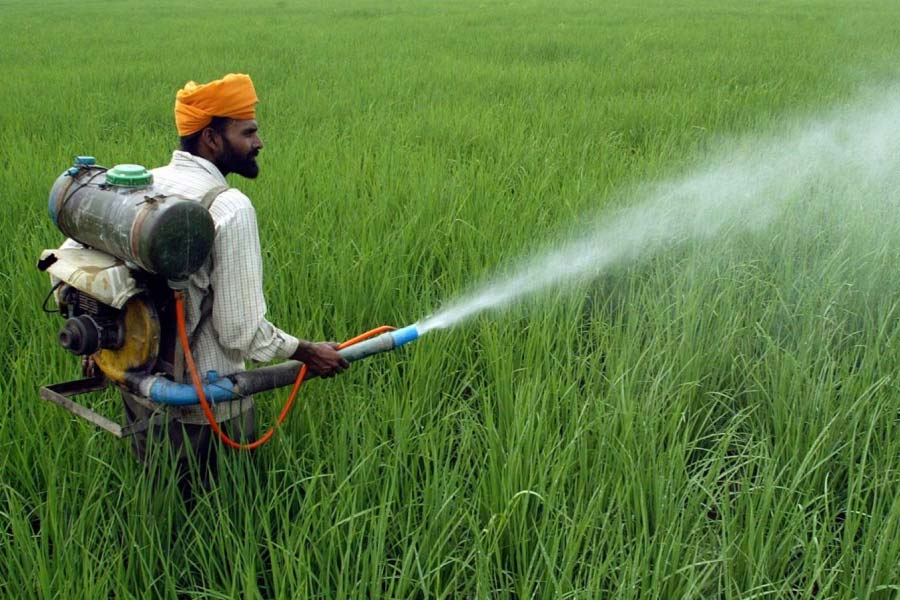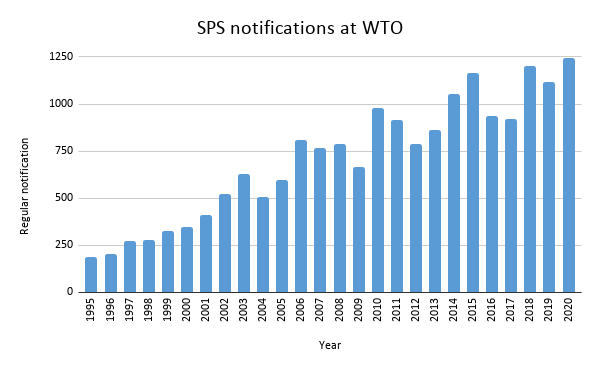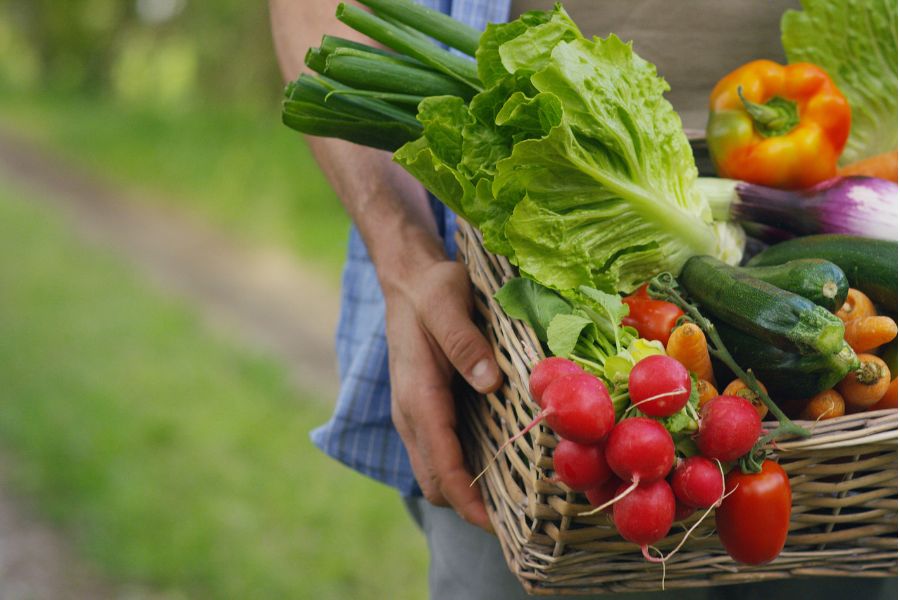MRL: A bane for India’s agricultural export ambitions
While developed countries have traditionally been stringent on maximum residue limit or MRL norms, the same are now being adopted in bits and pieces by some developing countries. This is leading to stoppage in shipments and general panic among the exporting community. In the long term, it can cause serious damage to India’s ambitions as a global agri-export hub.
- Indian F&B players have faced numerous issues based on MRL levels over the past few years in markets such as the US, Vietnam, EU, Saudi Arabia, Japan and Oman.
- Recently, Egypt has introduced checks on agriculture produce against 450 pesticides at port which resulted in non-clearance of containers of rice and spices from India at Egyptian ports.
- India needs to aggressively counter MRL changes where they lack scientific basis, either bilaterally or through the WTO.
- On the other hand, it is necessary to comprehensively audit the gaps with internationally accepted norms and address them through urgent counter measures.

The rising complexities in global trade can make exports often appear like a zero sum game. Regional trade agreements and overall impact of Uruguay round agreements have reduced many tariffs and subsidy related constraints to free trade. But on the other hand, non-tariff measures have been on a constant rise. The number of SPS measures notified to the WTO has increased exponentially and standards have consistently evolved in national, international and individual supply chains. This is even more prominent in major markets like the US, the EU and Japan, where SPS requirements such as maximum residue limits of various Plant Protection Products (PPPs) and levels of contamination have grown more and more stringent.
MRL limits are defined as safe limits that are supposed to define the maximum expected level of a pesticide (or any other agricultural chemical) on a food commodity after its safe and authorized use. It may be noted that these limits are food product specific and serve as monitoring tools to prevent illegal and/or excessive use of a pesticide and ensure compliance with the registered label.
Also, foods that contain residue above the MRL aren’t necessarily dangerous, as long as the calculated acute reference dose is not exceeded. Actually they are set at levels that are at least low enough to ensure that even high-level consumers will not ingest more than the acceptable daily intake (ADI) if they eat large quantities of every food type containing the residues at the MRL for that food type.
Although the WTO requires its members to base their MRL measures on Codex standards, individual countries can deviate from the standards if they give a relevant scientific justification. It has been alleged, however, that many countries actually impose such stringent MRL measures deliberately as a protectionist measure for restricting trade. Numerous such cases are reported to the WTO regularly. Earlier this year, India asked the EU to reduce non-tariff barriers such as MRL limits on food products, which had impacted exports of rice, peanuts, chillies and spices, tea, grapes, vegetables and sea food.
A win for science, but struggle for trade
Scientific research is an ongoing process, due to which MRLs are not fixed forever. Re-evaluation/resetting is normal, based on the availability of new toxicological/safety and monitoring data on pesticide residues.
Farmers and exporters are compelled to regularly adjust their production practices in accordance with evolving policies and regulations on MRLs of pesticide on agricultural products. The frequent changes, lack of effective communication channels and variations across export markets make compliance a highly complex matter, consequently impacting both their incomes and their ability to access export markets.
When MRLs are too low, they may get difficult for farmers to meet, while still protecting their crops from harmful pests and diseases. On the other hand, a missing MRL for a pesticide/crop combination could imply automatic prohibition and catch exporters unawares.
Finally, shifting or unclear policies in importing markets complicate production and export decisions of farmers who rely on transparency and predictability in the trading system. Exporters and other stakeholders in the agricultural trade community are concerned about a number of aspects of these policies, including the increased activity of global regulators in establishing their own MRL systems; variation in international and country-specific frameworks guiding the regulation of certain pesticides and the establishment of MRLs; and the resulting differences in MRLs across markets.
Indian F&B players have faced numerous issues based on MRL levels over the past few years. Exports of products including fresh fruits, spices, rice, tea and marine products have faced rejections or bans in markets such as the US, Vietnam, EU, Saudi Arabia, Japan and Bhutan, due to issues related to health and food safety standards. Some of the prominent cases are listed below:
- EU rejected table grapes consignments from India in 2010, leading to a sudden slowdown in the industry. It again rejected consignments in 2015, citing traces of chlormequat chloride, a plant growth regulator – leading to losses of about Rs 300 crore.
- In August 2014, the EU introduced “specific conditions” on the import of okra and curry leaves from India. Every consignment was required to be accompanied by a certificate, confirming that the produce had been sampled and analysed to ascertain that individual pesticide residues were present within their stipulated MRL limits.
- EU rejected table grapes consignments from India in 2010, leading to a slowdown in the industry. It again rejected consignments in 2015, citing traces of chlormequat chloride, a plant growth regulator – leading to losses of about Rs 300 crore.
- From January 2018, the EU also rejected imports of rice with levels of tricyclazole, which is a common fungicide, exceeding 0.01 ppm (1 mg/100 kg), compared to the earlier norm of 1 ppm or 1 mg/kg. In comparison, other developed markets like US and Japan have MRL levels of 3 ppm.
- The EU has also increased the inspection frequency of Indian shrimp consignments for antibiotic residues from 10% to 50%, adding higher time and cost burden for exporters.
- Saudi Arabia actually cited pesticide levels beyond its own MRLs to block shipments of green chillies and cardamom from India.
Recently, Egypt has introduced checks on agriculture produce against 450 pesticides at port which resulted in non-clearance of containers of rice and spices from India at Egyptian ports. The Egyptian side seems to have applied the ‘CODEX’ in line with EU regulations. This could point towards a worrying trend of such arbitrary standards now being imposed by developing countries, possibly leading to larger losses for Indian exports in these markets. Vinod Kumar Kaul, Executive Director, AIREA, affirms that Middle East markets like Egypt and Oman are indeed aligning themselves increasingly to EU standards. But he also adds:
The issue is that we are aware of the EU norms. But there is less clarity with Middle East countries on their norms and pesticides they are testing. Information on specific norms should be available so that it can be communicated to exporters.
In CODEX, for example, norms are defined for 23 pesticides in the case of rice. But Saudi Arabia had 124 chemicals in their list last year. This year, they have reduced it to 38. Some of these markets follow a mixed approach, stating that they will follow Codex norms in some cases, and EU norms where Codex is not available. So this creates a lot of confusion. New tests have been done by UAE and Oman recently, for instance, and specific inputs are not available, according to industry insiders. This creates unnecessary panic in trade.

Source: WTO
Compliance – the next big hurdle
Even when the compliance norms are known, fulfilling them is not an easy task. For starters, it is not practically possible for exporters to ascertain or ensure the MRL limits in farm produce at all times. It can take upto two years for traces of a pesticide to come down, after their use has been discontinued. Consider the case of rice production in India, which involves millions of farmers with small land holdings, and one can appreciate the enormity of the task. Moreover, it is not possible to align standards as per every market, considering the differences in weather conditions, soil types, pests, etc in different farming regions.
It often happens that a particular pesticide is used in India but not in a competing country. For instance, Pakistan is a competitor for Basmati Rice. When the EU market came up with the change in norms for tricyclazole, exporters from Pakistan were at an advantage, since that particular pesticide is not used by farmers in Pakistan.
There is a need to equip these farmers with the requisite technology, training and access to the right inputs, including seeds and fertilisers, to meet at least the minimum conditions imposed by importing countries. Prof Arpita Mukherjee, ICRIER, opines:
India needs to ban chemical fertilizers and pesticides that are banned in key importing markets, good package of practices should be shared with farmers, extension workers should be trained on the MRL requirements and regular data should be collected from the fields. All agencies in the supply chain from exports, to laboratories and certification bodies have to be trained and informed about the changes in MRL levels.
There are several facets to the MRL challenge that India needs to work on simultaneously. A careful analysis needs to be done for each product and market, to ascertain the bare minimum standards that need to be met. Only then, we can proceed to develop the necessarily mechanism to ensure compliance.
For instance, we did an analysis of issues faced by Indian food shipments headed for US and EU in 2020 alone. The data reveals 77 refusals for EU and 54 for the US during the year. Some of the primary reasons for rejections in the US are presence of salmonella, colour additives/artificial colouring, poisonous substance (like chloramphenicol), presence of pesticide/chemical residues as well as misbranding.
In the EU, on the other hand, Indian export products that have faced issues on MRL levels in 2020 include:
- Sesame Seeds – Ethylene Oxide (insecticide)
- Chillies – Chlorothalonil (fungicide)
- Frozen curry leaves – Chlorpyrifos (pesticide)
- Frozen diced red chilli puree: Methamidophos, monocrotophos, acephate, propargite and triazophos
- Frozen blanched vannamei shrimp – Nitrofuran (metabolite) furazolidone
- Basmati Rice – Thiamethoxam, tricyclazole and buprofezin
Product traceability is one potent way to overcome SPS barriers, as has been seen in the case of mangoes, fresh grapes, peanuts and eggplant exports. After facing multiple bans due to MRL issues, grape industry players engaged in comprehensive interactions with APEDA, research centres, regulatory bodies, agronomists, etc. This helped them understand the most appropriate crop management practices to attain desired MRLs. They also expanded the list of chemicals being tested and ensured traceability to the farm level. Azhar Tambuwala, Director, Sahyadri Exports, comments:
As a result of these efforts by the industry, grapes going from India are supposed to be the safest grapes. Supermarkets that retail our products also say that India has the best system to provide you residue-free grapes.
Instances like the present one for Egypt necessitate direct engagement by the Department of Commerce, wherein India should ask for an extension from the importing market on fulfilling the MRL requirements. The issue with Saudi Arabia was resolved amicably in a similar manner.
At the same time, where the norms lack scientific basis, they take the shape of a non-tariff barrier. India needs to aggressively counter such changes, either bilaterally or through the WTO using credible research and scientific data.
Moreover, there must be a comprehensive and fool-proof system for information gathering and dissemination to keep them abreast of changes in norms in international markets. Simultaneously, farmers also need to be educated on the alternatives available, as was done in the case of okra.
From the long term perspective, the Ministry of Agriculture must institute structural reforms in farming practices across regions and crop types to ascertain and address the mismatch with internationally accepted standards. The general policy direction should be encouraging farmers to lower the use of pesticides and chemicals, to minimise the incidence of such bans in the first place.
To ensure stringent compliance to norms, comprehensive infrastructure needs to be set up, from uniformity in laboratory testing processes, to a proper supply chain for perishables and proper storage for food produce. Prof Arpita Mukherjee, ICRIER, adds:
Certification bodies should have uniform standards. Farmers need information on right kind of inputs. A single regulatory body for exports will ensure accountability and if there are multiple bodies there is a need to investigate the gap in coordination if any. Also we need to understand how such exports have been cleared at the port of exit and why are they not meeting the importing country requirements.
In summary, proactive redressal of MRL issues is critical for India as it aspires to be a leading exporter of food products to the world in the coming years. Besides the immediate income loss and continued uncertainty for concerned exporters, this also implies serious damage to brand equity for the Made in India label in the long run.













Leave a comment